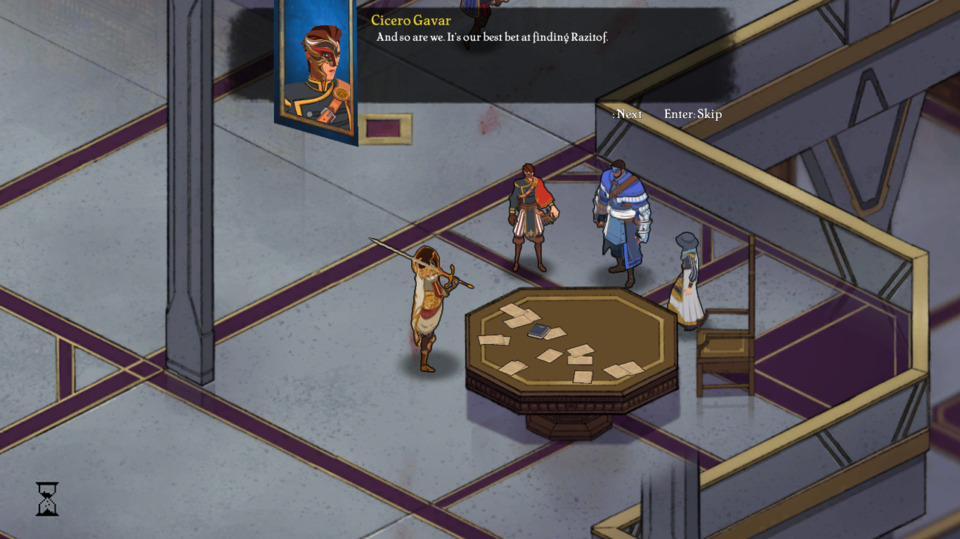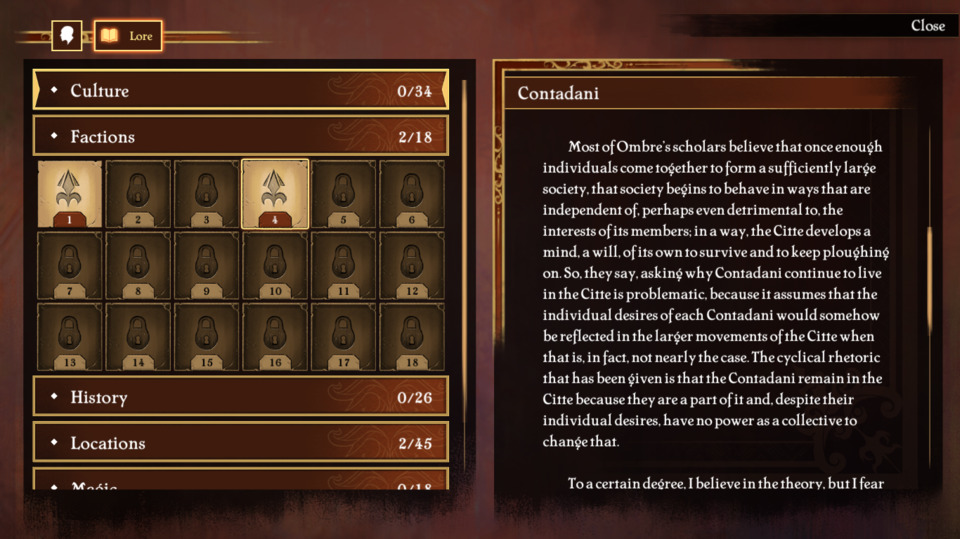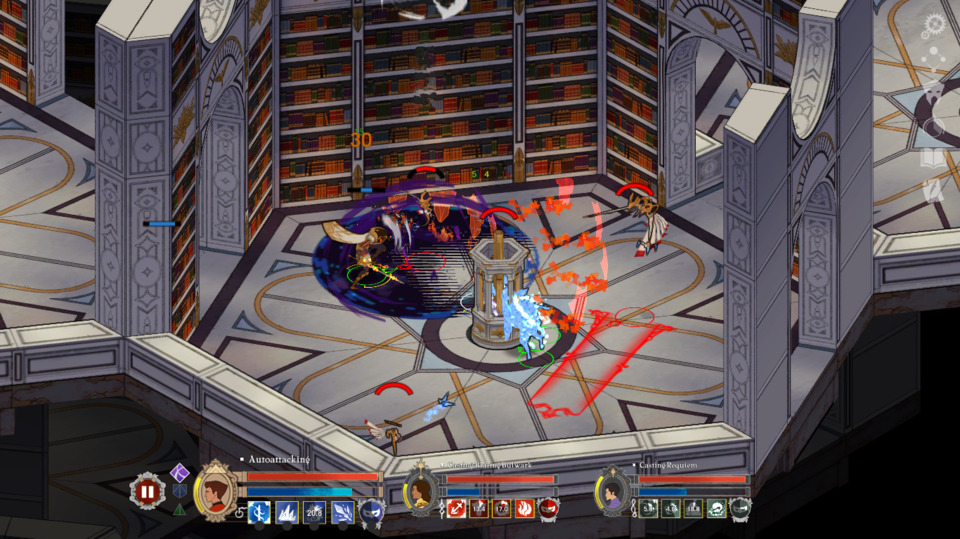Indie Game of the Week 245: Masquerada: Songs and Shadows
By Mento 0 Comments

The greatest strength of the Indie RPG, I've often believed, is in how it is able to truncate what is normally a 50-plus hour experience into something less than half that - usually out of necessity, due to the limited resources available to them and the importance of turnaround to a smaller studio - and still retain the core strengths; the elements that, for me at least, make the RPG genre so compelling. That's certainly been true for many of the RPGs I've covered in this particular feature over the years. However, a corollary to that rule is how Indie RPGs are more flexible when it comes to prioritizing what, to their developers, is most important to the genre. They're not so much beholden to focus groups and content for the sake of content; it's important to the game's success and their future livelihoods that the games are still good, of course, but they can pursue niche audiences more readily if they feel that approach is more integral to their style of game development without facing a net loss with the revenue it creates. Crowdsourcing has proven that many times over: if you make a very specific type of game for a very specific type of audience, they will find it and support your endeavors partly in gratitude for restoring what was once lost and abandoned by the video game industry's titans.
Masquerada: Songs and Shadows exhibits both the qualities stated above. It's a briskly-paced game at something in the region of 15 hours long, and it's one that prioritizes its storytelling and worldbuilding over the nuts and bolts of RPG combat and character development. This choice of priority might not be to everyone's liking, though it is relatively uncommon to see an RPG where what few combat mechanics there are present exist to prop up the story rather than the standard inverse, especially for sub-genres like loot RPGs and roguelikes where the narrative barely factors at all. That said, the combat still has some nuance to it even if I've found it generally a bit too easy and straightforward, and those limitations haven't diminished the overall experience of playing the game too much.

Masquerada is set in the city of Ombre (Umbra), so named due to being situated inside the fissure of a large mountain. The city has been able to grow to colossal size due to being blessed with an abundance of ancient devices called mascherines: face coverings similar to those used in masquerade balls that confer elemental magic powers to the wielder. While the mascherines have allowed the nascent "citte" of Ombre to maintain their independence and enjoy unprecedented growth, their scarcity has also created an inequitable society of haves and have nots: those with the mascherines, called the Masquerada, and those without, called the Contadani. As the game's prologue begins, you see the tail end of the Contadani's attempt to topple the power structure of Ombre and redress this imbalance; as the game's story proper begins, it's five years later and the imbalance still persists. While the story does eventually devolve into the usual ancient technology run amok and a world-ending threat, it has a maturity to its themes and the communication between its characters: the protagonist is Cicero Gavar, brother to the failed rebellion's instigator Cyrus, who left the city in exile shortly after it was quelled full of guilt and self-loathing for choosing to stand aside instead of joining his kin's insurrection. As one of Ombre's former top "Inspettore" - investigators for the city's governance, the Registry - he's called back to look into the disappearance of a major civil servant and close friend, a mystery that has already claimed the lives of two other Inspettores. This naturally snowballs into something much bigger as the story progresses, drawing in more characters to Cicero's orbit and eventually forcing him to address his checkered past.
The game has an impressive amount of background detail about Ombre and the lands surrounding it, creating a novel world inspired by the Mediterranean - almost every proper noun in the game is Italian - with its own history, religions (or reasons for a lack thereof), relationship with the natural world, languages, ethnicities, and cultures. For instance, music and song play significant roles in the history of Ombre: spells are cast using dances, musicians can direct elemental energies like mages, and songs are used to memorialize the dead and chronicle periods of history. The game's equivalent of the Dark Ages are called the Silent Ages: a time when no-one sang songs of those that had passed or events that had occurred, rendering them all lost to time. Lore entries about the world can be found almost everywhere, with the protagonist discussing each from his own perspective; this applies to major story characters as well, his records evolving as he comes to understand them better. Between the narrative-heavy approach and these dozens of lore entries, the game is considerably more verbose than anything short of an Elder Scrolls game, and just as confident with its worldbuilding.

Much of Masquerada reminds me of the more story-focused games built in the Infinity Engine, in particular Planescape: Torment and the more recent Pillars of Eternity II: Deadfire. Like those, the game has an isometric perspective and a combat system that runs in real-time but affords the player the ability of "tactical pausing": momentarily stopping the flow of battle to reposition units under your control and fire off specific skills. The AI controlling the two other characters in your party is capable enough, but rarely takes advantage of flanks or the game's "ultimate" skills: instead, the player can configure their aggressiveness and the order in which they prioritize their current abilities. All abilities run on a cooldown and use a stat that regenerates slowly during combat, so there's little reason to hold back on them: instead, the player is ideally looking to find effective synergies with them. Mechanics like elemental tagging - where some skills apply a "tag," like an inert status effect, that other skills then trigger for extra damage or debuff activation - and skills that draw or negate aggro to set up flanking attacks allow the player to exploit weaknesses whenever they spot them, applying abilities when they best make sense while never holding off on them for long. Presently, I have my protagonist summoning mobs to intercept enemies while he backstabs them, using another ability that warps across the battlefield to appear behind foes if the former isn't enough distraction. AoE attacks, especially radial ones or those that follow a line, are ideally employed when there are multiple targets in range: the player can influence enemy behavior through their positioning, or simply move their controlled character to a more advantageous spot.
The issue with combat is that it can be a little easy on the default setting. Bosses put up a little more of a challenge, but with fast revivals and the freedom to move out of range of any telegraphed attack without consequence, it's been mostly trivial so far. It also lacks a great deal of variability and effective character progression for a CRPG: there's no experience, levels, or equipment in the game, and skill points for new abilities are instead doled out incrementally. There are around six or seven skills for every character, but since only four can be equipped at any time there's little point wasting points on those you don't intend to use: instead, there's just about enough points to max the trees for four active skills and each character's single class-based passive. It's similar to the finite character development in a latter BioWare RPG, such as the Mass Effect series. In combat there are only three roles, based on stances: the Sicario is the roguish DPS class that gains a boost to flanking damage; the Pavisierre are tank-like warriors with larger areas of effect to their skills but less damage output; and the Dirge can fight from a range but are relatively defenseless up close. (As a rare Maestro, Cicero can adopt any of the three: given that every other playable character is stuck to just one, Cicero can fill whatever gap in the party's class coverage there might be.) Most battles are chaotic melees that conclude fairly quickly with or without the player's input, excepting special battles against tougher foes - I'd probably recommend you either bump the difficulty down and just enjoy the story, or bump it up if you're actually looking to use all the game's exploitation mechanics to their fullest since there's no real incentive or need to put effort into most of the combat encounters.

I would like to see the rest of the game through, as I'm very close to the end, but at this point I'm not really in it for the gameplay. That half has been serviceable more than it has been compelling, and I think if you come to RPGs for the depth of mechanics and character customization it's going to fall a little short. Conversely, if you like the kind of incredibly detailed settings you normally only see in RPGs (and rarely so at that) with an interesting, well-told story full of twists and turns, it'll do right by you.
Rating: 4 out of 5.
| < Back to 244: Pixross | The First 100 | The Second 100 | > Forward to 246: Cathedral |
